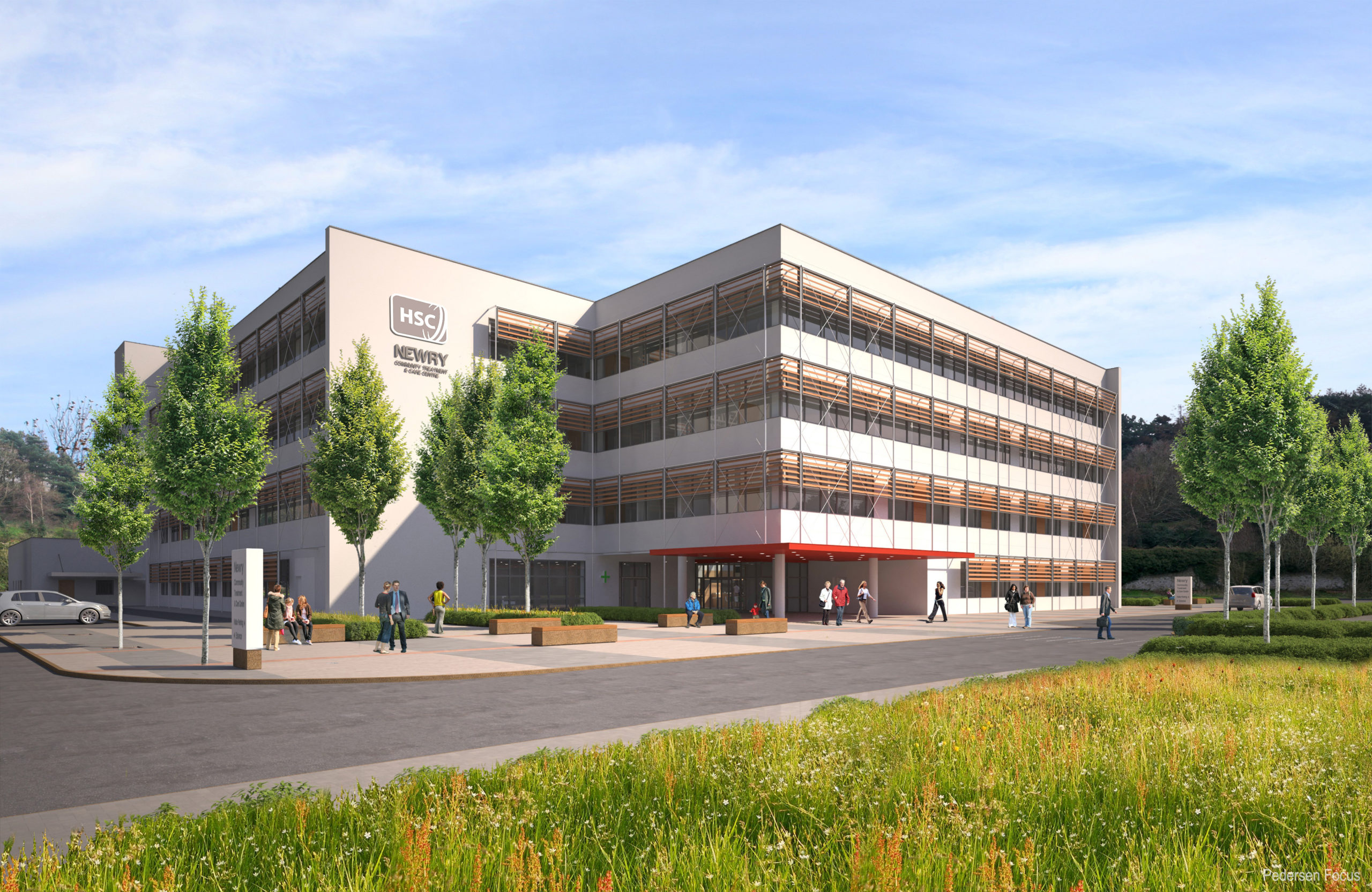How NHS trusts can build towards a more sustainable future

Richard Coe, Project Director at Kajima Partnerships, maps out a number of ways that the NHS should be looking to minimise its impact on our environment and deliver more sustainable healthcare. (Pictured above: Kajima Partnerships’ Lisburn and Newry Community Treatment and Care Centre project)
There can be no doubt that sustainability is the critical issue of our time. Governments around the world are committing to zero-carbon futures, promoting programmes such as the rollout of electric vehicles and investing in the search for viable renewable energy sources. Almost all areas of our lives are undergoing some form of green evolution, and our built environment has an equally important part to play.
Our public health services will be one such vital player in building sustainability into our towns and cities. Indeed, there is clear appetite for change at every level: 98 per cent of NHS workers believe that the health system should be more environmentally friendly. In order for NHS Trusts to meet their ambitions for carbon neutrality by 2040, these public buildings need to integrate new initiatives from modular construction to smart tech to create a greener health service.
Moving to modular
The combination of a climate emergency and a global pandemic has amplified the need for sustainable and efficient building methods for projects across all sectors. In this search, modular construction has come to the fore as an eco-friendly and cost-effective alternative. Indeed, a 2019 report by McKinsey found that modular construction could accelerate project timelines by 20 to 50 per cent and had the potential to deliver annual savings of up to $22 billion in the European and US markets.[1]
The premise of modular construction is well-suited to support requirements for increased capacity, as well as ambitions of sustainability within the NHS. As the structures are assembled offsite before being moved to their ultimate location, levels of pollution and environmental disturbance caused by transport are significantly reduced. New builds can also have their sustainability credentials tested in a controlled factory environment.
Once the buildings have been constructed, they can be moved or repurposed as necessary in response to social and medical need, acting as mobile clinics or burst space to cater to social distancing requirements. This flexibility is a key element in the long-term impact of such builds, reducing the need for future development and streamlining the process of how spaces and resources are used most efficiently.
Optimising space usage
The NHS has been operating under extreme pressure throughout Covid-19, with space and resources under constant strain. Looking forward, it’s crucial that initiatives are put in place to optimise space usage in the future – not only for the benefit of patients, but also for the staff and wider NHS trusts.
NHS trusts and their workforces have proven very nimble while adapting to the unique pressures of the pandemic. However, the buildings in which they operate have often been slow to keep up with these changes. While modular construction is one way towards upgrading the flexibility of facilities, another is the implementation of lettings strategies.
Leasing surplus or underused space can be an excellent opportunity for the NHS to maximise the use of its resources. The exploration of such options can be a strong start towards reducing wastage and driving up efficiency. Unnecessary overhead costs and energy usage could be significantly lowered, while also tapping into a new revenue stream that can be directed into environmentally conscious developments.
Making buildings smarter
If there is one thing that the pandemic has made clearer than ever, it is the value of technology. Smart building technology is developing apace, and NHS facilities should make use of such products to create optimum spaces that are designed with patients and staff in mind. Whether it be through digital communications systems or space management software, the use of cutting-edge tech can be a strong step forward in NHS sustainability goals.
Such technology is varied in its scope. For example, equipment could be installed to positively address environmental factors, such as sensors that monitor air quality. These could have an immediate impact on health, with recent reports attributing 5,700 deaths annually to air pollution.
Other digital infrastructure such as facilities management software could use AI to track footfall throughout hospitals, identifying overcrowded areas and appropriately delegating available space. Upgraded connectivity could allow streamlined sharing of information between staff members, ensuring that time and space – both increasingly precious resources – are used efficiently.
Investing in the infrastructure
The changes that can be made to achieve sustainable success are in no way limited to internal developments of existing buildings. Indeed, as we are seeing in cities and industries around the country, upgrades to external infrastructure are equally important.
To successfully implement sustainable operations, NHS trusts must roll out initiatives throughout their site footprint. Facilities such as electric vehicle charging stations can supplement energy generators such as small-scale wind turbines and solar panels, leveraging the different opportunities provided by all available space. While the initial investment will be large, such initiatives will pay dividends in years to come – both financially and for the good of the planet.
Building towards a greener future
As we look ahead to a post-Covid world, the mind inevitably turns towards the question of sustainability. Increasingly, individuals and societies are changing their lifestyles to protect the earth on which we live. It is critical that the built environment is not left behind in this mission, and public health services have a vital part to play.
Achieving net-zero carbon emissions in NHS trusts will take substantial development, but both ambition and solutions are already present. With initiatives that address existing infrastructure as well as the pipeline of new builds, sustainability can be built into the very environment in which our healthcare services operate.
[1] https://www.mckinsey.com/business-functions/operations/our-insights/modular-construction-from-projects-to-products
